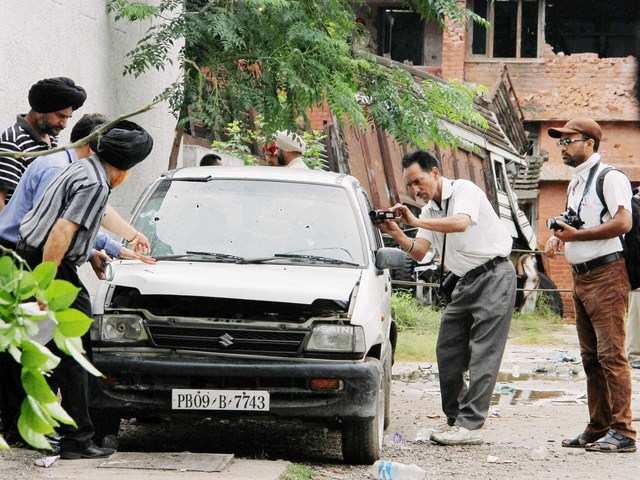Gurdaspur attack terrorists wore 'Made in Pak' gloves: Report | Zee News
New Delhi: In what further adds to the suspicion of Pakistan's role in Gurdaspur terror attack, a post-mortem report on the three fidayeens has revealed that one of them wore a glove that had 'Made in Pakistan' tag clearly imprinted on it, a newspaper report said Sunday.
According to a report published in the Hindustan Times, doctors in their post-mortem report on three Lashkar-e-Toiba militants killed in July 27 operation, have clearly mentioned that ‘made in Pakistan’ tag was found intact on a glove worn by one of the terrorists.
Also a Night Vision Device recovered from the terrorists is a US government property, that also brings their Afghan link in the light, the report added.
Police are considering it as another vital clue that links Gurdaspur attack to Islamabad.
Earlier this week, Home Minister Rajnath Singh had clearly said that the three attackers had infiltrated from Pakistan to carry out the strike, given the details from two Global Positioning System devices recovered from the militants.
However, Pakistan dismissed India's accusation, saying, "Pointing fingers without investigation is not a healthy trend”.
Giving details of the attack in Punjab, Rajnath Singh had said, "Preliminary analyses of GPS data indicates that the terrorists had infiltrated from Pakistan through the area near Tash in Gurdaspur district, where the Ravi river enters Pakistan."
It is also suspected, he said, that the same terrorists had planted five IEDs (Improvised Explosive Devices) on the railway track near Talwandi village between Dinanagar and Jhakoladi, which were subsequently defused by the bomb disposal squad.
On July 27 three heavily-armed terrorists dressed in Army uniforms struck in Gurdaspur at around 5.30 am and stormed the police station, leading to a 12-hour gunbattle.
In the terror attack, three civilians, three Home Guards and one police officer lost their lives, he said, adding 10 civilians and seven security force personnel were also injured.
With PTI Inputs







